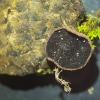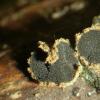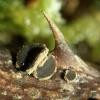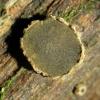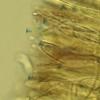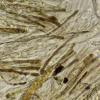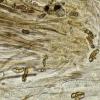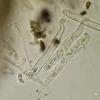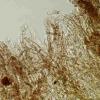
12-12-2025 18:39
Mirek GrycHello everyone.Macrofeatures similar to Mollisia b

09-12-2025 12:06
 Andgelo Mombert
Andgelo Mombert
Bonjour,Je recherche l'article concernant Hypobryo

07-12-2025 16:07
Arnold BüschlenHallo, ich habe in einer Moos-Aufsammlung (epiphy

08-12-2025 21:04
Mark Stevens"Hello everyone,I'm relatively new to microscopy (

08-12-2025 18:59
 Lothar Krieglsteiner
Lothar Krieglsteiner
.. found by a seminar-participant, I do not know t

08-12-2025 17:37
 Lothar Krieglsteiner
Lothar Krieglsteiner
20.6.25, on branch of Abies infected and thickened
Rutstroemia???
Maria Plekkenpol,
09-09-2021 15:18
 Hello,
Hello,On pieces of acorn cap buried in the ground were these cups. Fb about 4mm. Apothecium brown, very fibrillose all over. Not a real (longer) stem, but stem-like attached to the substrate.
Edge curled inwards. Hymenium black. I had everything ready to look through microscope: unfortunatly it broke down .. again.
I have no idea of what to think, thanks for your help!
Maria
Maria Plekkenpol,
09-09-2021 15:47

Re : Rutstroemia???
Thank you for this suggestion! I found this one once, but that were all very fresh fb's so the hymenium was greenish. Never saw it black before!
Thanks again!
Maria
Thanks again!
Maria
Viktorie Halasu,
09-09-2021 23:31

Re : Rutstroemia???
Hello,
based on macro photo, I would consider Rutstroemia echinophila too. It can have rather dark hymenium sometimes (drying?).
Viktorie
based on macro photo, I would consider Rutstroemia echinophila too. It can have rather dark hymenium sometimes (drying?).
Viktorie
Mirek Gryc,
10-09-2021 09:43
Re : Rutstroemia???
Hello all
Due to the strongly hairy external space, I would be prone to Peter's opinions. Firmly mature velutarina have hymenium colors of almost black. I have such a collection in my atlas:
https://grzyby-pk.pl/gat_v/gat_velutarina_rufo_olivacea.php
I also have a Rutstroemia Echinophila collection from Quercus, it looks completely different:
https://grzyby-pk.pl/gat_r/gat_rutstroemia_echinophila_quercus.php
Due to the strongly hairy external space, I would be prone to Peter's opinions. Firmly mature velutarina have hymenium colors of almost black. I have such a collection in my atlas:
https://grzyby-pk.pl/gat_v/gat_velutarina_rufo_olivacea.php
I also have a Rutstroemia Echinophila collection from Quercus, it looks completely different:
https://grzyby-pk.pl/gat_r/gat_rutstroemia_echinophila_quercus.php
Black Hymenium also has Catinella Olivacea but it looks different.
Hymenium Neodasyscypha cerina also darkens with age. I commonly occurs in the oak. I met them on wood but it's possible that it also grows on acorns?
You can compare:
https://grzyby-pk.pl/gat_n/gat_neodasyscypha_cerina.php
regards
Mirek
Maria Plekkenpol,
10-09-2021 19:41

Re : Rutstroemia???
Thanks very much for the suggestion! A friend will help me with her microscope, so I will check on Sunday!!
Maria
Maria
Maria Plekkenpol,
13-09-2021 18:50

Re : Viktorie, I think you were right!
Hello,
It was checked under mic on Sunday and to my big surprise it shows all the features of Rutstroemia echinophila like Viktorie suggested! But just to be sure I would like your second opinion very much.
Spores 17-21,5 x 5-5,5. Septated and with guttules. Some with conidia. Paraphyses with enlarged apex, filled dark brown. Asci 8-spored, 110-115 x 12-13.
What draw attention was the fact that quite a lot of the spores became brown in H2O.
Searching for R. echinophila I did see some pictures where it looked the same.
What would be your opinion?
Thanks!!! Maria
It was checked under mic on Sunday and to my big surprise it shows all the features of Rutstroemia echinophila like Viktorie suggested! But just to be sure I would like your second opinion very much.
Spores 17-21,5 x 5-5,5. Septated and with guttules. Some with conidia. Paraphyses with enlarged apex, filled dark brown. Asci 8-spored, 110-115 x 12-13.
What draw attention was the fact that quite a lot of the spores became brown in H2O.
Searching for R. echinophila I did see some pictures where it looked the same.
What would be your opinion?
Thanks!!! Maria
Mirek Gryc,
14-09-2021 09:16
Re : Rutstroemia???
Hello
And this is beautiful in Ascomycota, which still surprise us :)
I congratulate the interesting collection and Viktorie for such an accurate designation.
Without watching microscopic features, I would never think that this species belongs to Rutstroemia.
Thanks to you, we still learn something new :)
regards
Mirek
And this is beautiful in Ascomycota, which still surprise us :)
I congratulate the interesting collection and Viktorie for such an accurate designation.
Without watching microscopic features, I would never think that this species belongs to Rutstroemia.
Thanks to you, we still learn something new :)
regards
Mirek
Maria Plekkenpol,
14-09-2021 19:53

Re : Rutstroemia???
Hello Mirek,
Thank you for your reaction! I also thank all of you for helping me with this strange but educational puzzle hahaha!
And agree: they keep surprising and challenging us: and that's what makes it never dull.
We keep on learning, with help from people like Peter, Viktorie, you and all the others.
Maria
Thank you for your reaction! I also thank all of you for helping me with this strange but educational puzzle hahaha!
And agree: they keep surprising and challenging us: and that's what makes it never dull.
We keep on learning, with help from people like Peter, Viktorie, you and all the others.
Maria

